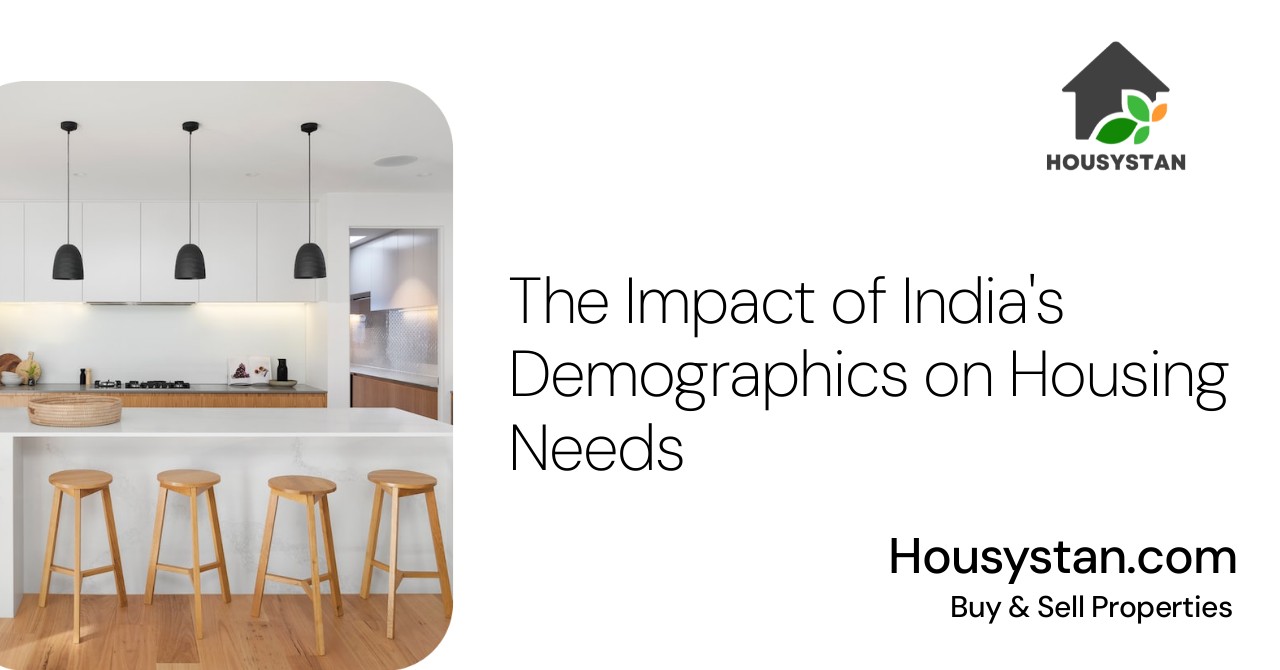The Impact of India's Demographics on Housing Needs
Read latest blogs and articles from Housystan

The Information mentioned here was last updated on:
4/1/2026The Impact of India's Demographics on Housing Needs
Understanding the dynamics of India's demographics offers key insights into the country's evolving housing needs. As one of the most populous nations in the world, India's unique demographic trends have profound implications for its real estate market. Exploring these trends helps us uncover how they shape the demand for housing, influence urban planning, and contribute to economic transformations.
India's Growing Population and Its Implications
- Verified Tenants/Buyers
- Unlimited Property Listing
- Zero subscription/charges fee
A Youthful Nation
- Largest Youth Population: India boasts the largest youth population in the world, with over 600 million people under the age of 25. This significant demographic group plays a pivotal role in shaping housing markets through their aspirations and lifestyle choices.
- Urbanization Trends: Young people are moving to urban areas in search of better education and employment opportunities, increasing the demand for urban housing.
Rise in Young Professionals
- Migration for Employment: Many young professionals migrate to metropolitan cities, intensifying the demand for affordable, quality housing in these regions.
- Preference for Rental Housing: The trend of renting rather than buying is popular among young professionals, emphasizing the need for rental accommodations and co-living spaces.
Changing Family Structures
Nuclear Families on the Rise
- Shift from Joint to Nuclear Families: There has been a noticeable shift from joint to nuclear families, partly due to urban migration and changing lifestyle preferences.
- Demand for Smaller Residential Units: The rise in nuclear families fuels the demand for smaller, independent living spaces—often apartments in urban localities.
Impacts of Women’s Employment
- Economic Participation: With more women entering the workforce, dual-income households are becoming more common, which can lead to an increased ability to invest in better housing.
- Need for Safety and Accessibility: Women’s safety and proximity to workplaces are critical factors influencing housing choices, spearheading developments like gated communities and well-connected residential areas.
Urbanization and Its Challenges
Urban Housing Demand
- Rapid Urbanization: By 2030, it is estimated that over 40% of India’s population will live in urban areas, highlighting the urgent need for sustainable urban housing solutions.
- Infrastructure Strain: Urban infrastructure is under tremendous stress due to the rapid influx of people, necessitating innovative urban planning and housing policies.
Affordable Housing
- Housing Affordability Issues: Many urban dwellers struggle with housing affordability, leading to a rise in informal settlements.
- Government Initiatives: Programs such as Pradhan Mantri Awas Yojana aim to provide affordable housing to the urban poor, boosting the demand for low-cost housing projects.
Economic Factors Influencing Housing Needs
Income Growth and Housing Aspirations
- Rising Middle Class: An expanding middle class with higher disposable incomes has elevated housing aspirations, driving demand for homes with modern amenities.
- Shift towards Ownership: There is a growing trend towards home ownership among the middle class, continuing to propel the residential property market forward.
Real Estate Investments
- Investment Opportunities: India’s real estate market is attracting both domestic and foreign investment, further stimulating housing development.
- Smart Cities Initiative: Efforts to develop smart cities are in line with global trends, focusing on enhanced infrastructure, which influences housing needs by promoting futuristic living.
The Role of Technology in Housing
Tech-Driven Real Estate
- Digital Platforms for Housing Search: Technology is revolutionizing how individuals search for houses, with digital platforms enhancing convenience and transparency in the housing market.
- Virtual Reality in Real Estate: Virtual tours and augmented reality (AR) are becoming tools for potential homebuyers, influencing how housing is marketed and sold.
Innovations in Construction
- Sustainable Building Practices: As environmental concerns rise, sustainable building practices are becoming more prevalent, influencing the materials and methods used in housing construction.
- Prefabricated Homes: The use of prefabricated technologies allows for quicker construction times, supporting the rapid development required to meet housing demands.
Conclusion
By considering these demographic shifts and factors, stakeholders in the housing industry can better anticipate and meet the growing and changing needs of India's population. Understanding where these demographic trends intersect with housing demands is essential for developing effective strategies in urban planning and real estate investment.
Engage with professionals in the real estate sector and urban planners to gain further insights into how these demographic trends could affect future housing and infrastructure developments. Additionally, policymakers must consider these factors to ensure sustainable city growth and adequate housing for India's burgeoning population.